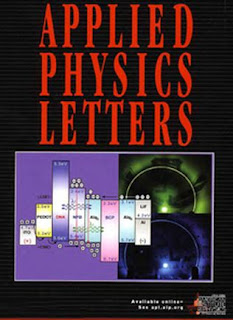A University of Cincinnati (UC) researcher has an unusual approach to developing “green” electronics — salmon sperm.
Professor Andrew Steckl, a leading expert in light-emitting diodes, is intensifying the properties of LEDs by introducing biological materials, specifically salmon DNA.
In considering materials to introduce to affect the movement of the electrons, Steckl evaluated the source of materials with an eye to supply, especially materials that do not harm the environment.
“Salmon sperm is considered a waste product of the fishing industry. It’s thrown away by the ton,” says Steckl with a smile. “It’s natural, renewable and perfectly biodegradable.” While Steckl is currently using DNA from salmon, he thinks that other animal or plant sources might be equally useful. And he points out that for the United States, the green device approach takes advantage of something in which we continue to be a world leader — agriculture.
Steckl is pursuing this research in collaboration with the Air Force Research Laboratory. The research was featured recently in such premier scientific publications as the inaugural issue of naturephotonics and on the cover of Applied Physics Letters.
“The driving force, of course, is cost: cost to the producer, cost to the consumer and cost to the environment” Steckl points out, “but performance has to follow.”
And what a performance — lights, camera, action!
“Some of the electrons rushing by have a chance to say ‘hello,’ and get that photon out before they pass out,” Steckl explains. “The more electrons we can keep around, the more photons we can generate.” That’s where the DNA comes in, thanks to a bunch of salmon.
“DNA serves as a barrier that affects the motion of the electrons,” says Steckl. It allows Steckl and his fellow researcher, the Air Force’s Dr. James Grote, to control the brightness of the light that comes out.
“The story continues,” says Steckl, again smiling. “I’m receiving salmon sperm from researchers around the world wanting to see if their sperm is good enough.” The next step is to now replace some other materials that go into an LED with biomaterials. The long-term goal is be able to make “green” devices that use only natural, renewable and biodegradable materials.
This research was funded by the United States Air Force.
Here we have the “yin” of biological materials in photonic devices. See Steckl’s “yang” research placing electronics in biological materials: UC Engineering Research Widens Possibilities for Electronic Devices: NSF-funded engineering research on microfluidics at the University of Cincinnati widens the possibilities on the horizon for electronic devices
Contact: Wendy Hart Beckman wendy.beckman@uc.edu 513-556-1826 University of Cincinnati
Technorati Tags: Nano or Nanotechnology and Nanotech and green electronics or light-emitting diodes and University of Cincinnati or White House Press Briefing by Dana Perino 10/01/07 VIDEO PODCAST and Houston Astrodome and Physicists pin down atomic spin for spintronics


















No comments:
Post a Comment